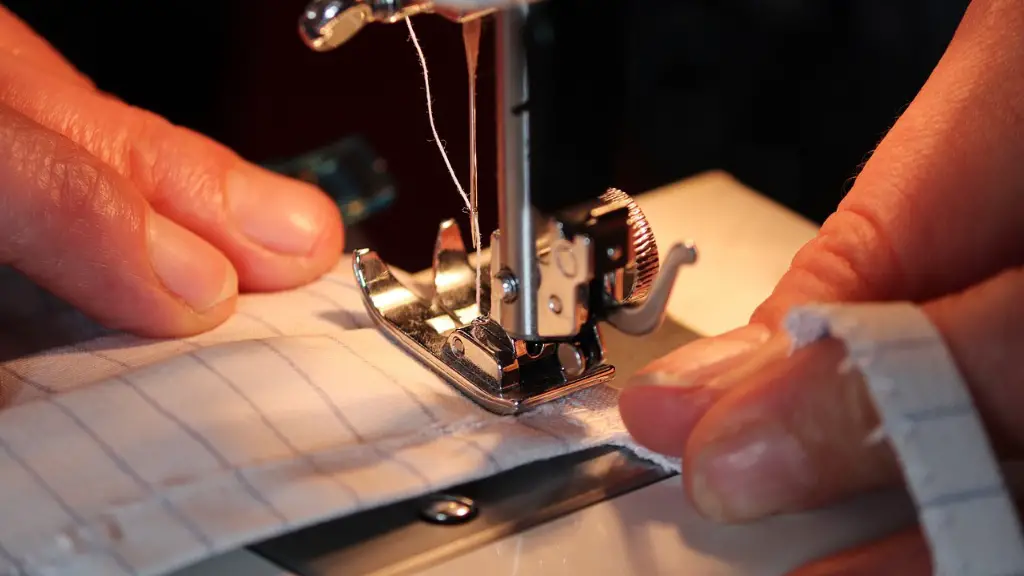Cutting Cloth without a Sewing Machine
It is possible to make clothing without using a sewing machine. Hand sewing can create a range of items, from children’s clothing to formal wear. A person’s ability to make clothing without a machine is limited only by their imagination, creativity and patience.
Learning to make clothing without a machine takes practice and patience. It also requires certain basic tools and materials. The most important is a quality sewing needle. A good needle will have a large eye and a strong point that is capable of piercing multiple fabric layers without breaking. Other important sewing tools include small sharp scissors, tailor’s chalk or pens and large-eyed appliqué needles to sew on buttons and other decorations.
Making a garment without using a machine requires pre-washing the fabric and then cutting it. Some crafters will use patterns, but it is also possible to free-hand cut the fabric into the desired shapes. As you measure and cut the fabric it’s important to leave extra fabric for seams and hems. Depending on the fabric and the finished project, it’s important to choose the best stitch. A tailor’s point is an easy stitch that can be used for most sewing projects.
Next, the fabric will need to be seamed, eased and hemmed. When joining two pieces of fabric, it’s important to use the right pressing technique. For knit fabrics, the pressing should be done by hand. This can be done by using a pressing cloth and lightly applying steam. For heavier weights of fabric, an iron set on a low heat and steam setting can be used.
It is also possible to make clothing without using a machine by using fusible web adhesive. Fusible web adhesive allows the crafter to back the fabric pieces to hold them in place while sewing. This reduces the risk of misalignment between the pieces and lessens the amount of hand sewing required.
Adding Closures
Adding buttons, zippers and other closures to clothing without a sewing machine is sometimes difficult, as the fabric must be reinforced to hold the closures in place. For example, when attaching buttons to knits, stabilizers can be applied to the back of the fabric to provide the extra strength that is needed.
It is also possible to add pockets to clothing without using a sewing machine. The simplest method of doing this is to use iron-on interfacings that give extra strength and support to the fabric. The pocket can then be sewn onto the garment by hand or with a needle and thread.
Embellishments
Clothing without a sewing machine can be embellished in a range of ways. For example, laces and ribbons can be sewn on by hand. Other embellishments, such as buttons, beads, crystals, sequins and appliqués can also be used to decorate clothing. It is important to secure any decorative accessories to the garment with a supportive backing, to prevent them from falling off.
Raised Designs
Raised designs can be added to clothing without a sewing machine. This is done by creating a ‘fabric sandwich’. A layer of interfacing is placed between two layers of fabric and held in place with a few stitches. This technique can be used to make 3D designs, such as bows, flowers and other shapes.
Creating Structure
Creating structure without a sewing machine is achievable with a few simple techniques. One way to do this is by using boning, which is a stiff material used to add structure and shape to a garment. It can be used around necklines and bodices, to provide support and prevent drooping.
Another technique to create structure without a machine is to use interfacings. This can be used to make the fabric stiff enough that it holds its shape. Interfacings are available in various weights and can be used to make everything from collars to waistbands and even hems.
Other Design Ideas
Other clothing design ideas that can be accomplished without a sewing machine include smocking and pleating. Smocking is a technique used to gather fabric into pleats. A smocking plate contains a grid and a number of needles which are used to create rows of pleats. For pleating, fabric is bunched, gathered and sewn together with a needle and thread. This can be used to create pleated skirts, ties and ruffles.
Working with Leather
Leather can also be used to make clothing without a machine. Soften the leather before cutting the pieces and use a leather needle designed to penetrate the tough material. It is also possible to reinforce the leather with interfacing or a layer of fabric, before stitching the pieces together by hand.
Putting It All Together
Putting all the pieces of a garment together without using a machine is a slow and often unforgiving process. But with patience and practice even the most novice crafter can create unique clothing and accessories. Using the right tools, fabrics and techniques, it is possible to create custom clothing with a personalized touch.


